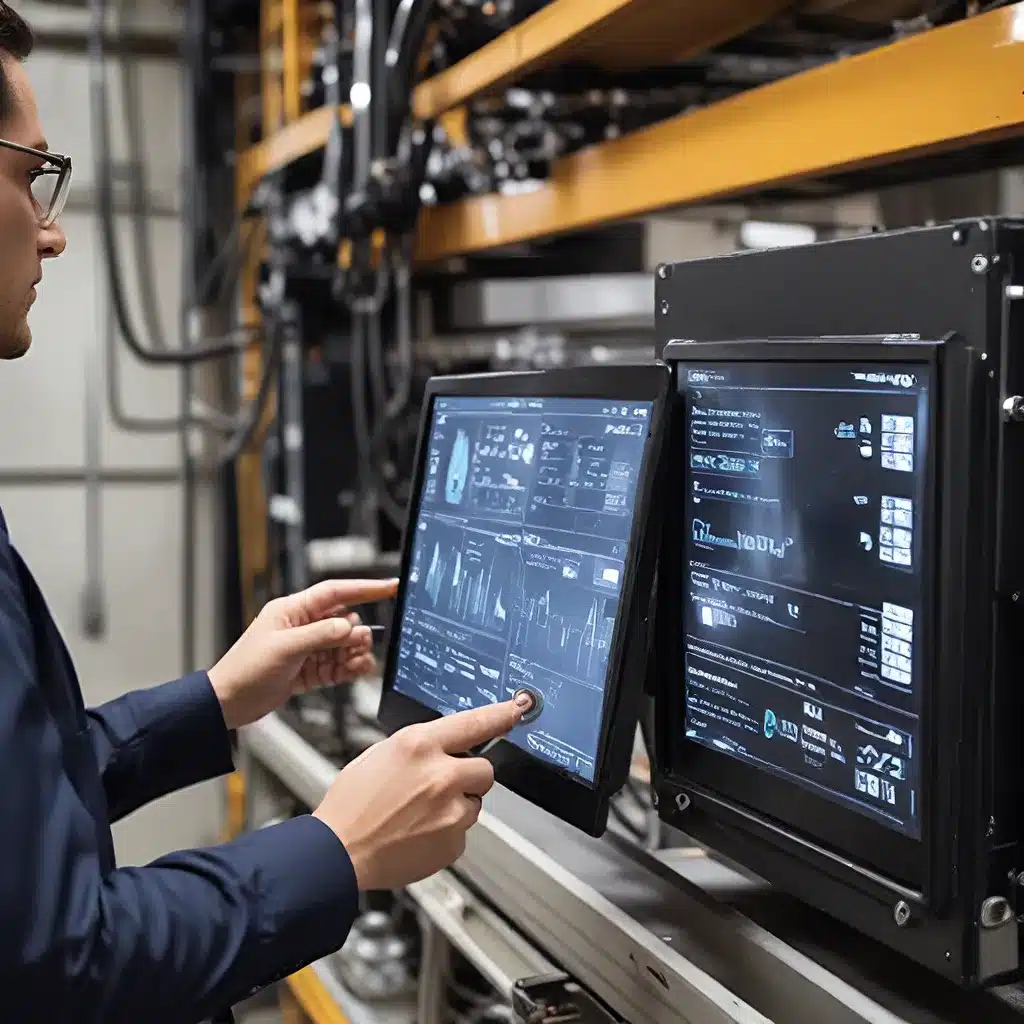
Revolutionizing Maintenance Strategies with Sensor Networks
In the ever-evolving landscape of industrial operations, the importance of proactive asset management has become increasingly paramount. Sensor-enabled condition monitoring is at the forefront of this transformation, empowering organizations to shift from reactive maintenance to a more predictive and efficient approach.
By continuously monitoring the health and performance of critical equipment, sensor networks provide invaluable insights that enable businesses to anticipate and address potential issues before they result in unplanned downtime or catastrophic failures. This proactive approach not only enhances operational efficiency but also significantly reduces maintenance costs and improves overall asset longevity.
The Rise of Predictive Maintenance
Predictive maintenance is a game-changing strategy that leverages advanced hardware technologies and predictive analytics to revolutionize after-sales services and asset performance management. This innovative approach ensures minimized downtime, optimized maintenance schedules, and enhanced operational efficiency, leading to unparalleled customer satisfaction and business success.
Reliable and continuous monitoring of asset conditions is the foundation of predictive maintenance. By leveraging real-time data collected from strategically placed sensors, organizations can accurately predict the next required maintenance intervention, reducing unexpected downtime and saving costs. This enhanced equipment reliability and longevity ultimately leads to higher safety and increased operational efficiency.
Predictive Maintenance: Empowering Businesses with Proactive Asset Management
Sensor Network Design Considerations
Designing an effective sensor network for condition monitoring requires a holistic approach that considers various factors, such as network topology, sensor placement, data management, and energy efficiency.
Network Topology: The choice of network topology, whether it be star, mesh, or hierarchical, can significantly impact the network’s performance, scalability, and resilience. Each topology offers unique advantages and trade-offs, and the selection should be based on the specific requirements of the application.
Sensor Placement: Strategically positioning sensors throughout the monitored environment is crucial for capturing accurate and comprehensive data. Factors such as accessibility, environmental conditions, and the criticality of assets should be considered to ensure optimal sensor placement.
Data Management: Handling the vast amounts of data generated by sensor networks requires robust data management strategies. This includes data acquisition, processing, storage, and analysis, as well as the integration with cloud-based platforms or edge computing capabilities.
Energy Efficiency: Sensor networks often operate in remote or inaccessible locations, making energy efficiency a primary concern. Advancements in low-power sensor technologies, energy harvesting techniques, and power-efficient communication protocols are essential for ensuring the longevity and reliability of sensor-enabled condition monitoring systems.
Cordant Sensing Solutions: Enabling Proactive Asset Monitoring
Sensor-Enabled Condition Monitoring in Action
Successful implementation of sensor-enabled condition monitoring can be observed across various industries, delivering tangible benefits and transforming asset management practices.
In the pulp and paper industry, a leading company, Eldorado Brasil Celulose, has leveraged a comprehensive portfolio of vibration sensors and wireless condition monitoring solutions to gain real-time insights into the health of their critical equipment. By monitoring factors such as shaft position, acceleration, and pressure, the company has been able to detect potential issues early, enabling proactive maintenance and significantly reducing unplanned downtime.
Similarly, in the commercial HVAC sector, sensor-based condition monitoring has become essential for ensuring the consistent functionality of HVAC systems. By continuously monitoring parameters like current, motor speed, vibration, and airflow, businesses can detect deviations in performance, allowing them to schedule maintenance or component replacement before failures occur.
Securing Sensor Networks and IoT Ecosystems
As sensor networks and IoT technologies become increasingly integrated into critical infrastructure and industrial operations, security emerges as a paramount concern. Addressing the unique vulnerabilities inherent to these distributed systems requires a comprehensive approach, encompassing both hardware and software-based security solutions.
Hardware-based Security: Leveraging secure microcontrollers and dedicated security chips, such as OPTIGA solutions from Infineon, can provide robust protection against cyber threats, ensuring the integrity and confidentiality of sensor data and communications.
Software-based Security: Implementing secure communication protocols, encryption techniques, and access control mechanisms is crucial for safeguarding sensor networks and IoT ecosystems from unauthorized access and data breaches.
By adopting a layered security approach, organizations can mitigate the risks associated with sensor-enabled condition monitoring, ensuring the reliability and trustworthiness of their asset management systems.
Powering the Future of Sensor Networks
As the demand for real-time, data-driven asset management continues to grow, the energy efficiency of sensor networks becomes increasingly vital. Advancements in low-power sensor technologies, energy harvesting techniques, and power-efficient communication protocols are paving the way for the widespread deployment of sustainable, long-lasting sensor networks.
Innovations in magnetic sensors, pressure sensors, and vibration monitoring solutions enable the continuous monitoring of critical equipment, while minimizing the power requirements and environmental impact of the sensing infrastructure. By leveraging these advanced sensor technologies, organizations can maximize the operational lifetime of their condition monitoring systems, ultimately enhancing the return on investment and the overall effectiveness of their asset management strategies.
Embracing the Sensor Network Revolution
The transformative power of sensor-enabled condition monitoring is undeniable. By leveraging the wealth of data provided by strategically placed sensors, organizations across diverse industries can optimize their asset management practices, reduce maintenance costs, and enhance operational efficiency.
As the Internet of Things (IoT) and Industry 4.0 continue to reshape the industrial landscape, the integration of sensor networks will be a driving force behind the next generation of proactive and data-driven asset management. By embracing this sensor network revolution, businesses can position themselves for long-term success, ensuring the reliability, safety, and sustainability of their critical assets.